|
Genres, Themes, Actors, and Directors:
- Black Comedy
- Dentists
- Dick Miller Films
- Jack Nicholson Films
- Killer Plants
- Roger Corman Films
Response to Peary’s Review:
Peary writes that this “genuinely funny cult classic” (directed by Roger Corman in “just two days”, and written by Charles B. Griffith) is “a low-budget gem”: a “spoof of every mad-scientist picture in which blood is needed to keep some experimental creature alive, and of every fifties sci-fi film in which there is a giant mutation, and of numerous horror films”. He points out its similarity to “Jerry Lewis comedies, with Seymour as the man-child with an IQ of seven, a good heart, a lousy personality, and work habits that drive his boss crazy”. He also notes the connection to Dragnet in the hilariously “terse, unemotional dialogue between… two detectives investigating missing persons”. Peary argues (and I agree) that the film “works on its own terms as [a] good, absurd comedy”, and that “the cast is marvelous — they might pass as a Yiddish repertory company which has been working with the script for years instead of doing it while it was being written”. The storyline stays consistently outlandish, filled with one unexpected scene after the other — including the infamous “dentist scene” featuring the “little-known Jack Nicholson as the squeaky-voiced masochist”:
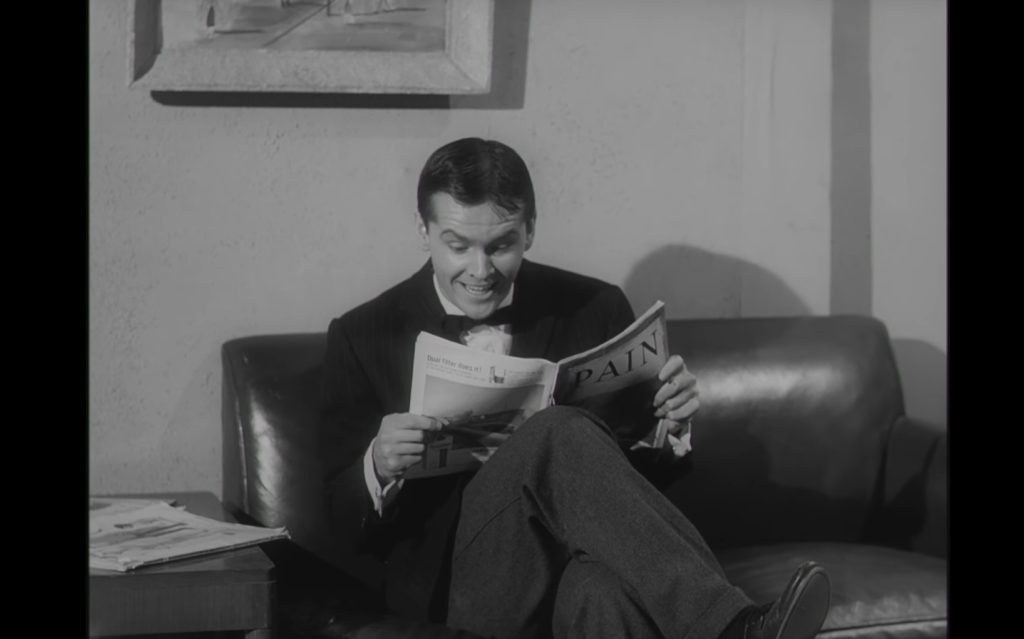
… visits from “a low-keyed flower eater” (Dick Miller) which presumably are intended to “counter the man-eating flower”:
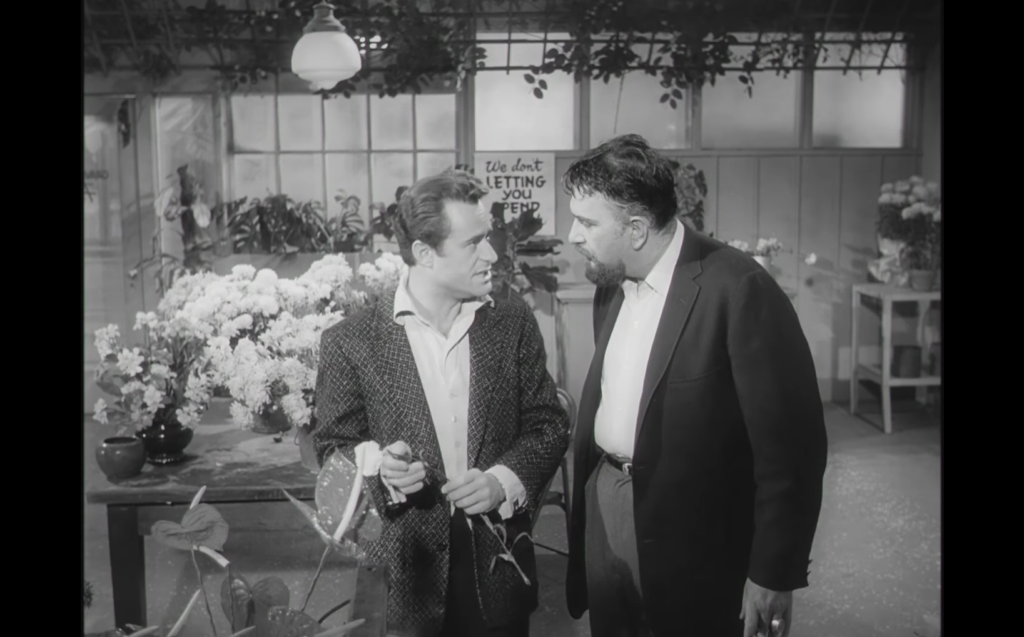
… “Seymour’s visits with his hypochondriac mother (Myrtle Vail)”:
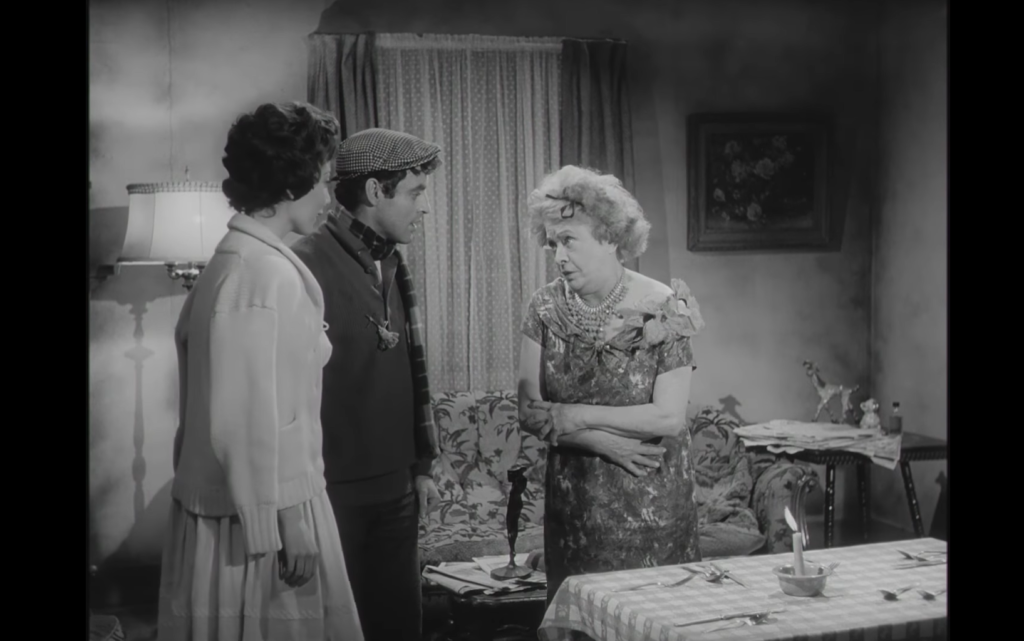
… and each of Seymour’s unintentional killings — er, scavenger hunts for food.
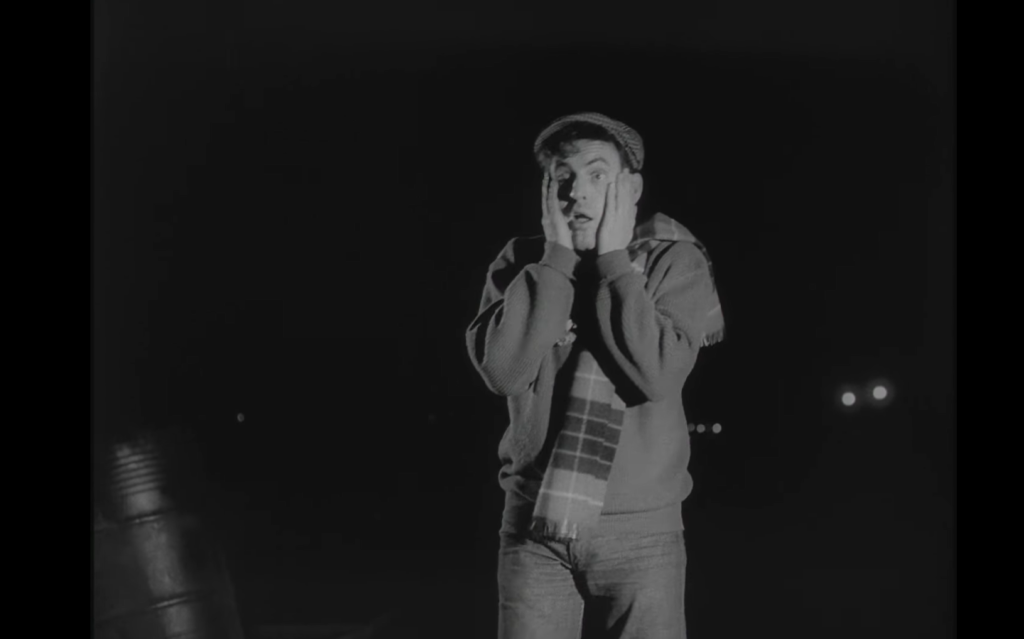
LSOH was eventually made into an off-Broadway musical, which itself was turned into a 1986 film by Frank Oz (listed in the back of Peary’s book).
Redeeming Qualities and Moments:
- The creative opening credits
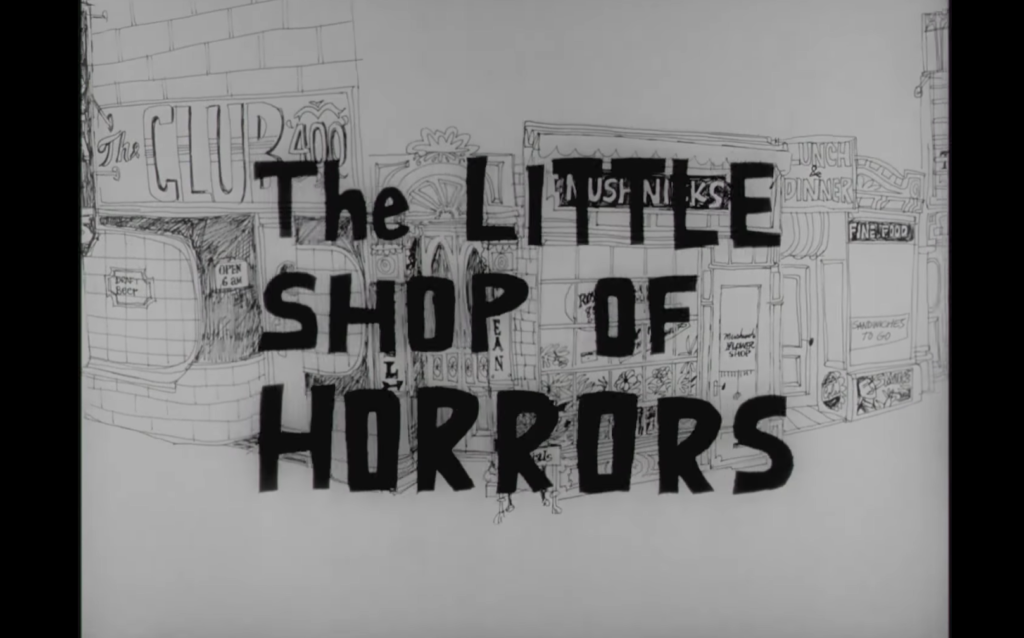
- Many enjoyably ludicrous scenes and moments
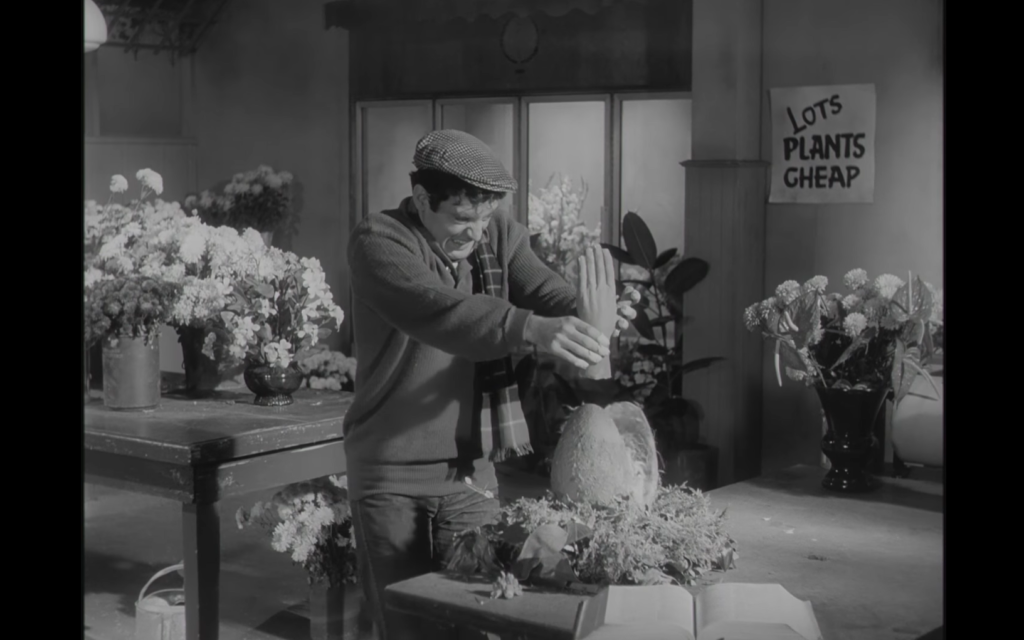
- Fine performances from the entire cast
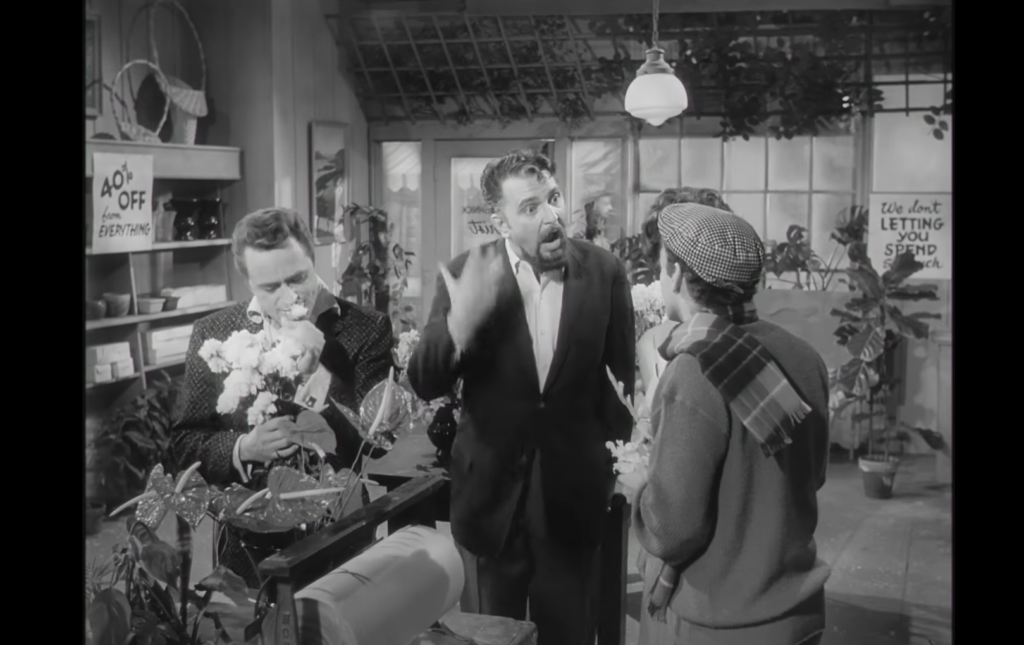
- Charles B. Griffith’s script: “It’s a finger of speech!”
Must See?
Yes, as a cult classic.
Categories
Links:
|
One thought on “Little Shop of Horrors, The (1960)”
A tentative must, mostly for its unusual premise.
Seems to me that, for the most part, the only audience for this film these days would be those who are fans of the ’80s musical it’s based on; many of them are likely to be curious-enough to want to see the root of something so beloved. Even though I think many of them will, in a number of ways, ultimately be disappointed, they may still be fascinated. John Waters once famously said that filmmakers should never remake a film that worked well the first time – and he’s right. ~which is why it was a brilliant idea to remake this Corman film, esp. re-fashioned as a wacky, over-the-top musical. The story did not work well when it was first made. But its idea was singular enough to re-invent.
Corman’s film just isn’t very good. Working in comedy, for a change, that doesn’t seem to make much difference to the director. Whether he was doing comedy or drama, a western, sci-fi, or a biker movie, Corman’s tendency was to direct in the same pedestrian manner. (That would change slightly when he improved somewhat in his later films.) Whatever works in ‘LSOH’ in particular is usually due to the cast, trying their best when they can. But Corman doesn’t reveal much ability in dealing with actors or material style. (He never really denied his desire to make things quick and get them up on the screen to make a buck.)
The script does occasionally have a funny line here and there. (I do kind of like the ‘Dragnet’-esque detectives. And the dinner scene – when Seymour brings Audrey home to meet his mom – is kind of fun.) But most of the humor is forced or falls flat. The film has the strangest tone (which is, no doubt, appropriate, given the premise) – but it still comes off like a television sit-com of the period.
I hadn’t seen this in many years, but I recently saw the musical in its blu-ray release – which is terrific and miles beyond the Corman film in every way. It’s kind of interesting being now reminded of what the creators of the musical chose to either exploit or remove from the original story. But the original remains something of a chore to get through.
Note: Almost 25 years later, stars Jackie Joseph and Dick Miller would be seen (delightfully) as a married couple in Joe Dante’s ‘Gremlins’.